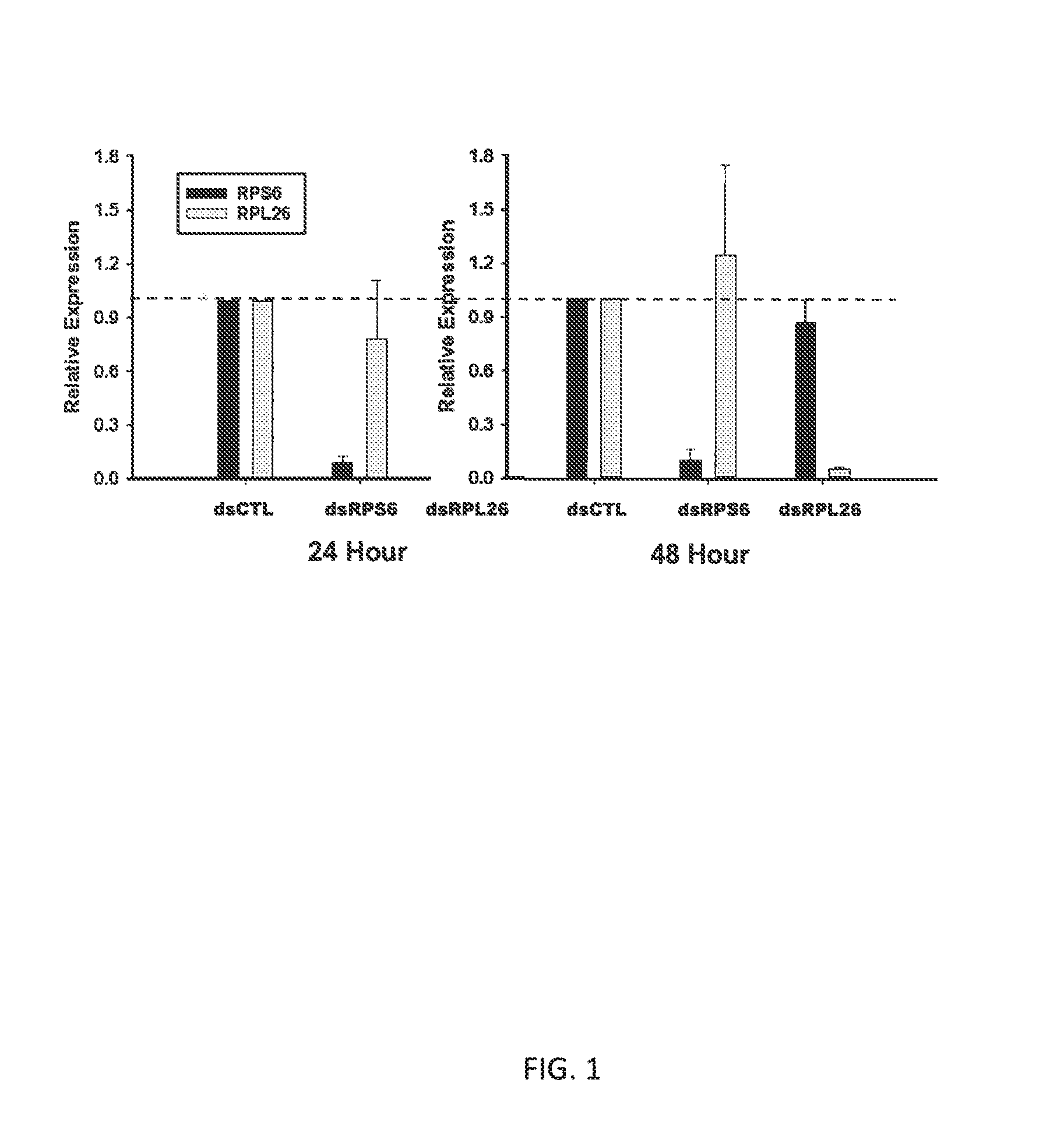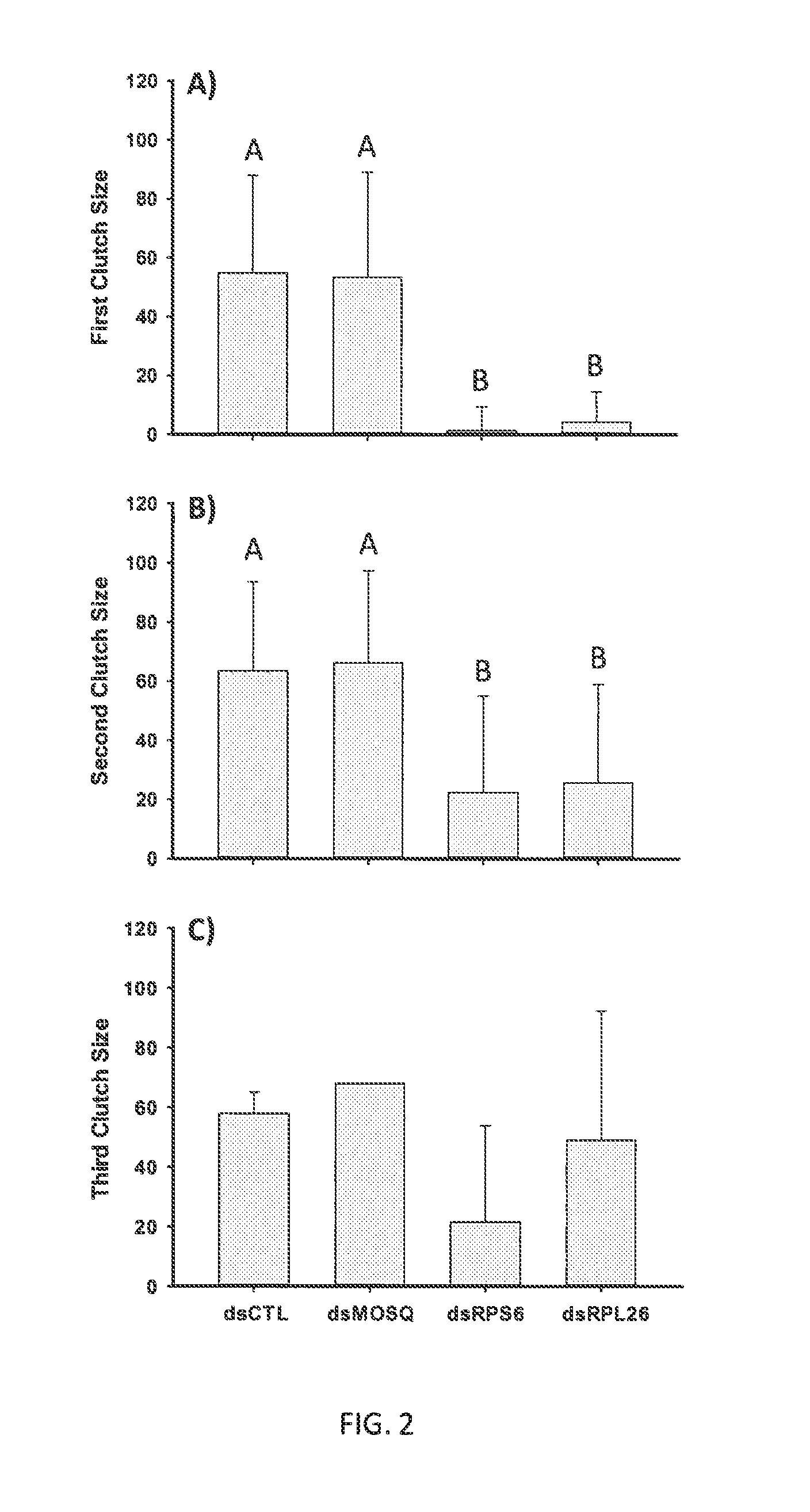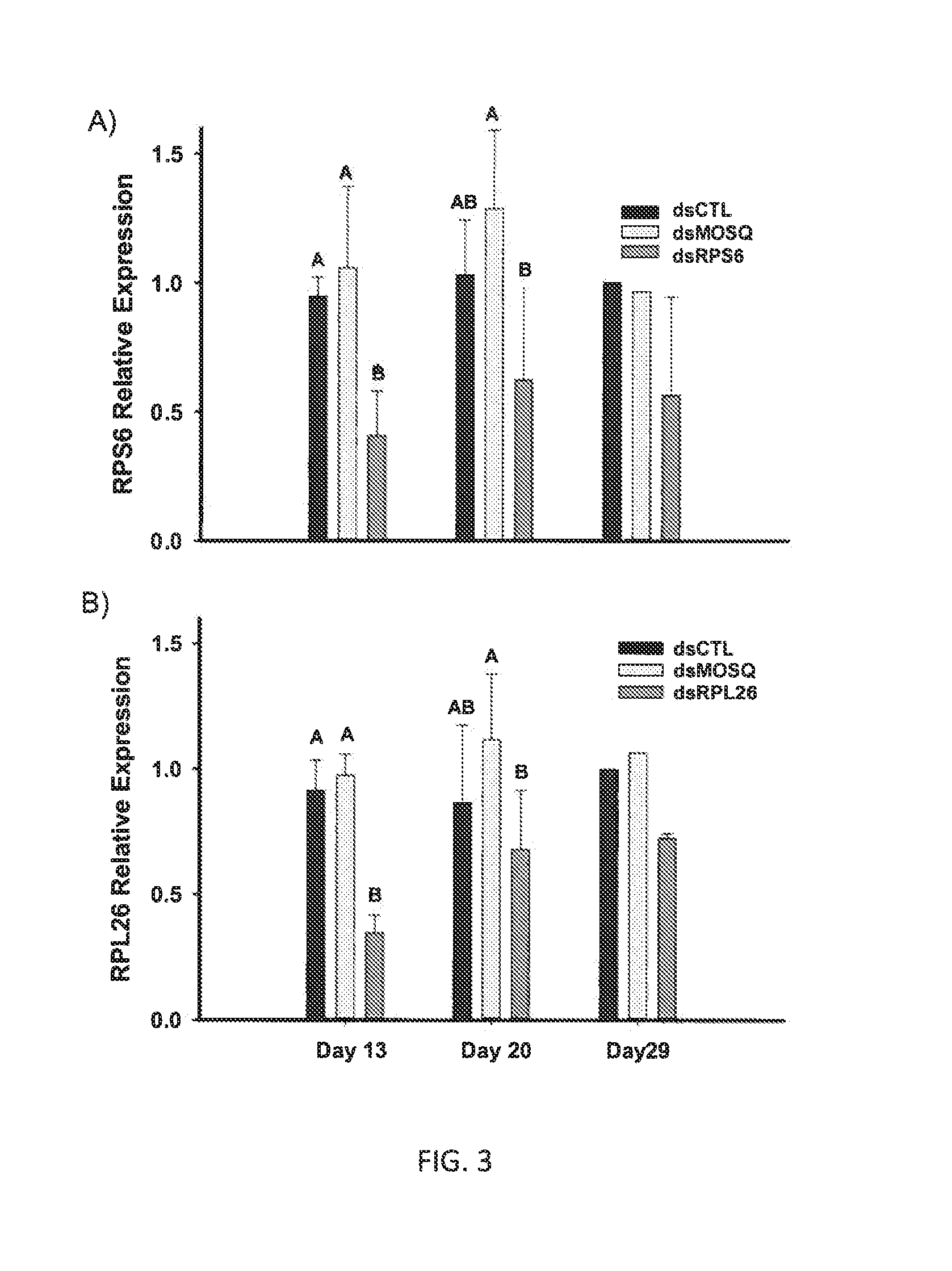Double-stranded ribonucleic acid as control against insects
- Summary
- Abstract
- Description
- Claims
- Application Information
AI Technical Summary
Benefits of technology
Problems solved by technology
Method used
Image
Examples
example 1
Production of dsRNA
[0016]Three dsRNA constructs were manufactured and used for this study. Consensus transcript sequences for the small ribosomal subunit, RPS6, (AAEL000032), the large ribosomal subunit, RPL26, (AAEL005817) and as a control, Israeli Acute Paralysis Virus (dsIAPV) was used.
[0017]Constructs were manufactured following the instructions in the MEGASCRIPT® kit (Invitrogen™, Thermo Fischer Scientific Corporation, Waltham, Mass.) with a few modifications. Initial template was produced by PCR using Aedes aegypti Orlando female cDNA and T7-appended gene specific primers (Table 1). After gel purification of the initial product and sequencing to verify the expected amiplicon, this was used for further template amplification to produce sufficient quantity to allow input of 1 ug of template per 20 ul MEGASCRIPT® reaction. This amplified product was concentrated and buffer exchanged twice with nuclease free water in a spin concentrator (Amicon® 30K MW MWCO, Millipore®, Billerica,...
example 2
Knockdown of Ribosomal Transcripts of Aedes aegypti
[0019]Analysis of the constructs in Table 1 was conducted using AAG-2 cells. AAG-2 cells were grown in Eagle's media (GIBCO) supplemented with 15% FBS (Lonza Inc., GA) in a 5% CO2 environment at 27 C. Cells were passaged weekly in T75 flasks with 10 ml of culture media. For experimental purposes, 200,000 cells were plated into each well of a 24-well flat-bottom tissue culture plate (3D, USA) after dissociation from the previous flask approximately 24 hours before use. Two replicate plates were made for collection and processing after 24 and 48 hours of exposure to dsRNA. Application of the two control dsRNA constructs as well as the two test constructs was made at 100 ug / ml in culture medium to 75-80% confluent AAG-2 cells. A previously characterized dsRNA targeting the inhibitor of apoptosis 1 transcript (dsIAP1) (AAEL009047) with known lethal activity against the AAG-2 cell line (Pridgeon et al., 2011; Liu & Clem, 2011) was used ...
example 3
Evaluation of Mosquitoes Following Introduction of dsRNA
[0026]In these studies, glass capillaries were pulled to a fine tip using a KOPF® (Tujunga, Calif.) Model 720 needle puller with settings at 16.8 (resistance setting) and a pull strength of 4. A needle was placed into a NANOJECT™ 2000 (World Products Inc., FL) and the tip was broken to provide a sharp point. The device was set to deliver 100 On per injection. The needle was filled with 3-4 ul of a test solution containing either a control dsRNA (dsIAPV) or test dsRNA construct (dsRPS6 or dsRPL26). Three to five day old females were manually aspirated into a BIOQUIP® (Rancho Dominguez, Calif.) holding tube and cold anesthetized in a laboratory refrigerator at 3-4 C. Three replicate groups, of 11 mosquitoes each, were placed on the dorsal aspect on chilled slides placed into 15 cm petri dishes and aligned to allow easy injection. Plates and slides with aligned mosquitoes were maintained at 4 C until injected as we have not observ...
PUM
 Login to View More
Login to View More Abstract
Description
Claims
Application Information
 Login to View More
Login to View More - R&D
- Intellectual Property
- Life Sciences
- Materials
- Tech Scout
- Unparalleled Data Quality
- Higher Quality Content
- 60% Fewer Hallucinations
Browse by: Latest US Patents, China's latest patents, Technical Efficacy Thesaurus, Application Domain, Technology Topic, Popular Technical Reports.
© 2025 PatSnap. All rights reserved.Legal|Privacy policy|Modern Slavery Act Transparency Statement|Sitemap|About US| Contact US: help@patsnap.com



